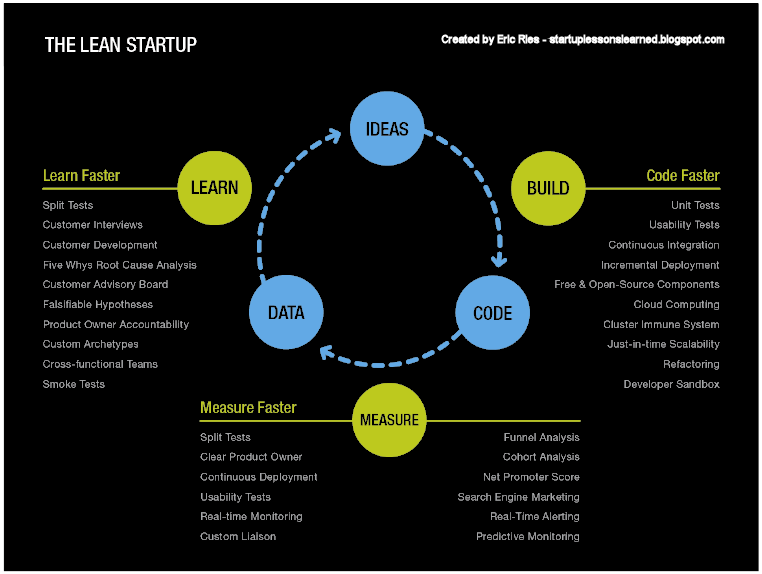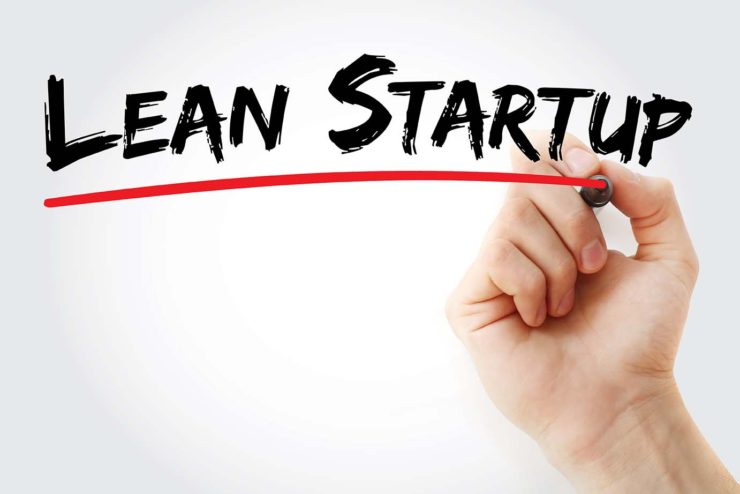This time I wanted to share a tool that makes up the innovation ecosystem from which startups work applying them in their proposals. In my case; I can tell you that I have applied this tool in several of the innovative projects that I have developed, obtaining very positive results, especially in the validation of the product and / or service before going out to the market.
But we go! Deepen the topic ... this method is widely used by entrepreneurs to validate their innovative initiative and focusing on the needs of the client, counting on their feedback and modifying the product to develop the final version. It is the concept of fashion in the entrepreneurial world, where the guidelines and resources to develop a project are very different from doing it in a large company.
"We should not fall in love with our project because then we will not see the mistakes it has"
Go adapting the product to what the market demands and not our own vision, is the most successful when launching something new.
The origin of the lean startup method
The original concept comes from Steve Blank, entrepreneur and mentor of Silicon Valley, when he began to develop a methodology of product validation based on customer development (Customer Development), which basically consists of knowing if our product meets their needs or desires.
Subsequently, Eric Ries, pupil and pupil of Steve Blank, popularized it in his book "THE LEAN STARTUP METHOD", where he gave shape to these ideas by building a methodology applicable to all kinds of new projects. What is the lean startup method? It is a methodology based on "validated learning", that is, to validate the hypotheses little by little before having the final product and start to scale the business (startUp). We define and shorten development cycles, launching different proposals for a period of time and obtaining valuable feedback from our potential customers, with which to improve the next final version of the product.
With this methodology, 3 techniques must be applied:
1. Customer development: (customer development): We check if our product meets the customer's needs. To do this, we went out and asked those who would be our potential customers, we showed them the product, they tried it and they gave us their sincere opinions. This is how the final product is being built, always thinking about the final customer.
2. Business model: (Canvas): This is something I detail in a previous article. And it consists of visualizing and designing a dynamic and visual business model, embodied in a canvas called Canvas by A. Osterwalder. It is divided into grids, each one dedicated to a fundamental aspect of the business model: value proposition, income, expenses, acquisition channels ... In these grids, ideas are added and removed continuously until a final version is obtained.
3. Agile or scrum techniques: It consists of the application of communication techniques and product development in a dynamic and fast way to propose ideas, improvements and to configure the final project in a team. You can use project management software to organize tasks or short and concise meetings to evaluate the work of the previous day and the one that will be done that day, are some examples of these techniques.

The lean startup cycle
Until a product is validated by a series of customers, it should not go on the market.
"If you make a mistake, do it soon and cheaply," says Eric Ries. It is one of the premises of the lean-startup method, where the business idea is improved based on trial and error. When we first detect the failure, less costs and repercussions will have to solve it.
5 Fundamental steps in the lean start up method
1. Pose a hypothesis
Part of a problem to solve and explain why they would be willing to pay for your offer. To identify the problem / pain, we can conduct a series of interviews with our potential clients and identify what really concerns them. We must know if the problem is painful enough to attack it.
2. Validate the hypothesis
From creating a product or service with the basic minimum characteristics to verify if it is what the market wants until a demonstration of how it works, everything is possible. The objective is to know if people would want it and buy it. This first validation will be of the "early adopters", the first users who will use it and the most susceptible to try new things in our sector.
3. Measure the hypothesis
The best way to know what metrics you will implement is to identify what are the steps to follow to get to your offer and how many times they turned to them to buy. It is essential to identify the KPIs of a product, measure them to know if we meet objectives and we are perfecting our product.
4. It generates validated learning
It means that along the way adjustments and changes have been made in the product or service, as well as in the market, suppliers ... learning from the environment to which the product is directed. It is essential to listen to all stakeholders (people directly or indirectly involved in the product / service) and incorporate their feedback (feedback)
5. Repetitive cycle
You start up the previous steps once again with an improved product or service and start over.
Launch of the "Minimum Viable Product (MVP)"?
If we apply the previous steps of the lean startup method, the result that we obtain is to launch, first a Minimum Viable Product or prototype (MVP): A very basic product, with the essential functionalities and we test what reaction our target audience has.
With your feedback, we rebuild and improve the product and launch a new version: MVP2 and perform the same process.
So several times to polish the product around what the customer demands and identify why he is willing to pay for our product / service to be successful.
What does pivoting mean?
Change significant aspects of the business and go to a new one, either to attack another need, change the business model, the value proposition ...
Pivoting does not mean failing with your idea! Pivoting means to realize in time that this business has no future and we have identified something in which we can be more successful.
If we insist on continuing with a project that has no future, that the client does not need and is not willing to pay, however well we have designed it, we do not have business and we will end up failing. This is the goal of the lean startup method.
WHAT'S YOUR OPINION ABOUT IT?
